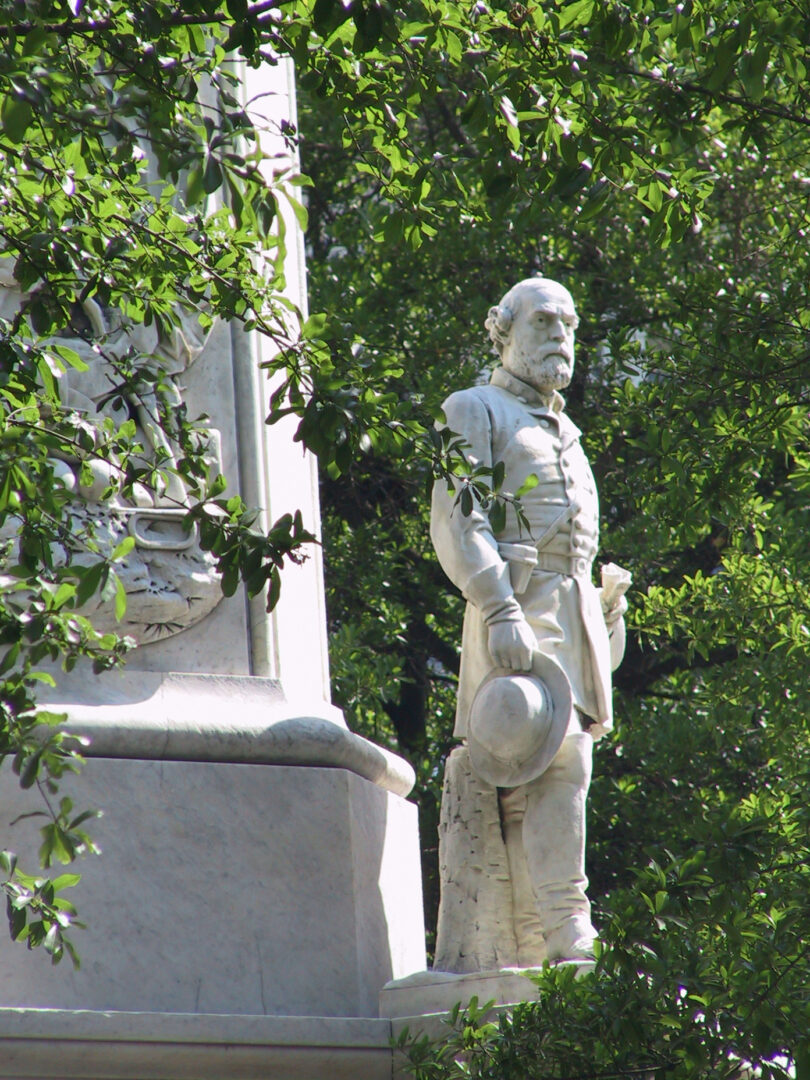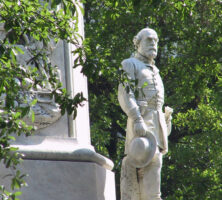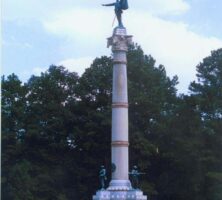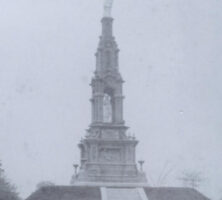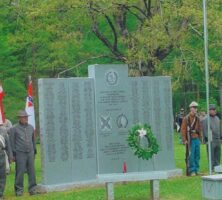Confederate memorials honor those who fought for the Confederacy during the Civil War (1861-65), and are located across the state, in both large cities and small communities.
Efforts to honor Georgia’s Civil War veterans began almost as soon as the war ended, but the great majority of Confederate monuments were dedicated in the late nineteenth and early twentieth centuries, a period that coincided with the rise of Lost Cause religion and the passage of Jim Crow laws across the South.
Most memorials are monuments or markers, but others take different forms. Confederate memorials in Georgia include depictions of Georgia’s military leaders and battles in the stained-glass windows at Rhodes Hall in Atlanta, as well as the carving on Stone Mountain of Robert E. Lee, Thomas “Stonewall” Jackson, and Jefferson Davis, which is the largest Confederate memorial in the world. Memorials to individual soldiers include the large obelisk to Captain Henry Wirz (Andersonville) and statues to generals Patrick Cleburne (Ringgold), Nathan Bedford Forrest (Rome), John B. Gordon (Atlanta), Joseph E. Johnston (Dalton), Robert E. Lee (Richmond Hill), and James Longstreet (Gainesville). Countless other memorials to individual Confederate soldiers and sailors can be found in cemeteries across the state in the form of tombstones.
Markers consist primarily of signs or plaques that provide information about war-related individuals or events. Located throughout the state, they include government historical markers, markers installed under the Works Progress Administration (a New Deal program instituted by U.S. president Franklin D. Roosevelt), and markers placed by organizations or individuals. Examples of federal government markers are found in Georgia at Fort Pulaski, the battlefield at Chickamauga, and Kennesaw Mountain. Numerous state markers related to the Civil War discuss troop movements, engagements, or historical sites. Examples include the birthplace marker in Coweta County for William Thomas Overby, who is known as the “Confederate Nathan Hale,” and the marker in Augusta’s Magnolia Cemetery for the burial location of seven Confederate generals from Georgia.
Characteristics of Monuments
Georgia’s Confederate monuments are made from a variety of materials, including fieldstone, marble, sandstone, granite, iron, and bronze, and are designed in a wide range of styles. The most common style is a shaft supported by a pedestal and topped by the figure of a Confederate soldier, but other styles include obelisks, columns, boulders, arches, tablets, cenotaphs, fountains, benches, and even one totem pole.
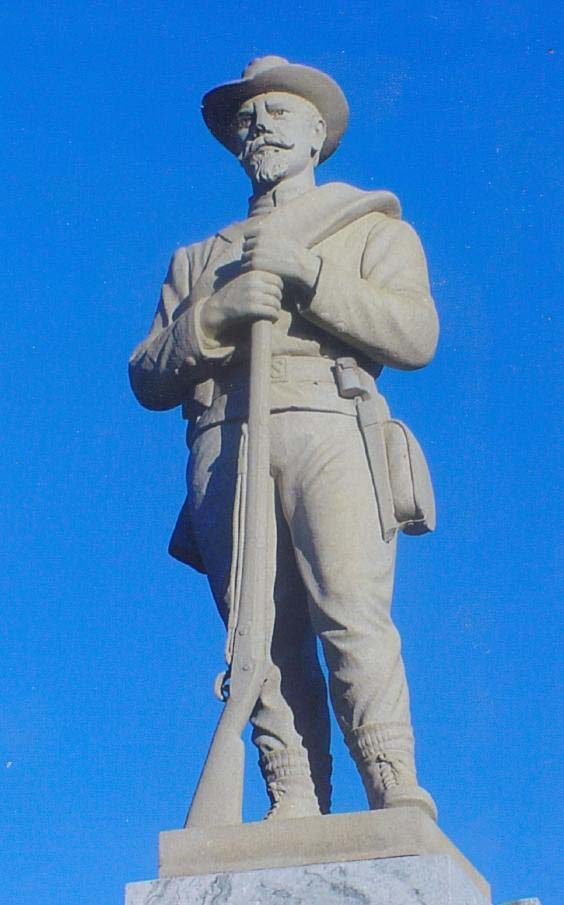
Inscriptions, ranging from the simple to the highly political, adorn Georgia’s monuments. “Lest We Forget” or “Our Confederate Dead” are examples of simple sentiments found on numerous monuments. Typical expressions of extended sentiments include poet Theodore O’Hara’s lines, “On fame’s eternal camping ground / Their silent tents are spread, / And glory guards, with solemn round / The bivouac of the dead,” which is found on the Colquitt County monument in Moultrie; and “They struggled for constitutional government as established by our Fathers and though defeated, they left to posterity and record [sic] of honor and glory more valuable than power or riches,” found on the Randolph County monument in Cuthbert. Other monuments, especially some newer ones, list the names of men who were either native to or buried within the county in which the monument stands. Examples of this type are found in Blairsville (Union County), Carrollton, Dalton, Dawsonville (Dawson County), Elberton, LaFayette (Walker County), and Springfield (Effingham County).
Monument Construction
The construction of monuments began soon after the war, but most communities, financially wrecked by the conflict, had little money with which to honor the fallen. By 1900 three organizations, beginning with the Ladies Memorial Association and followed by the United Daughters of the Confederacy and the United Confederate Veterans, had undertaken a movement across the South to honor the veterans. These groups began to raise funds for monuments through bake sales, variety shows, lotteries, publication sales, donations, and socials.
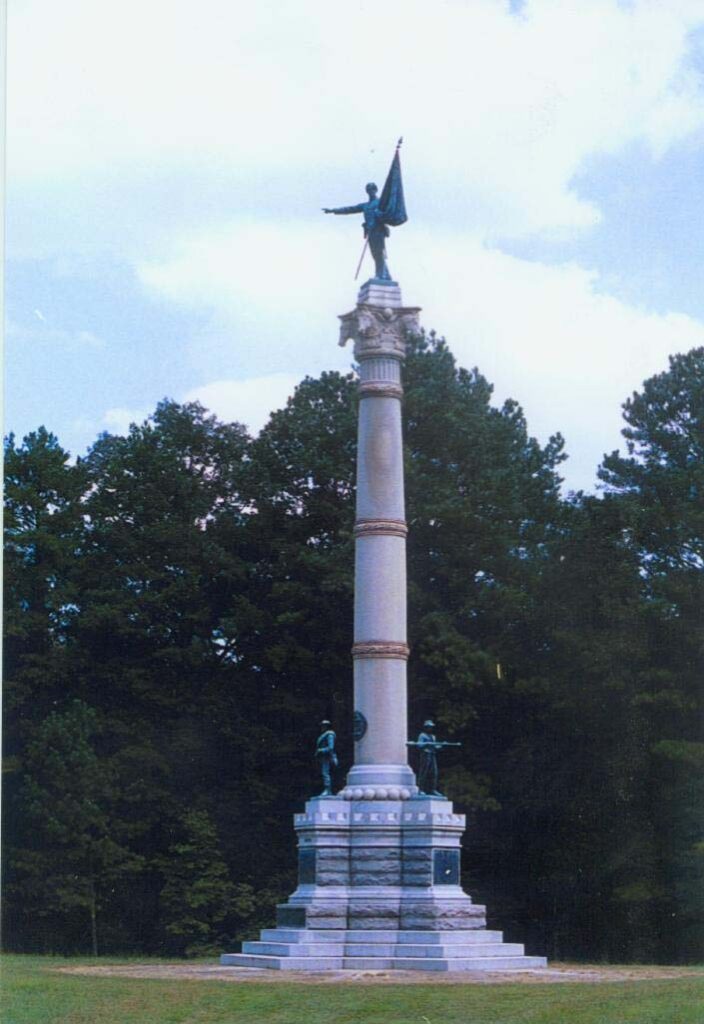
Monuments were originally placed in a town’s most prestigious location, such as along a major thoroughfare, on the grounds of the courthouse or city hall, or in a cemetery. Over the years, however, mostly due to changing traffic patterns, many monuments have been moved to safer locations; the monument in Albany has been moved at least four times.
One of the earliest Confederate memorial services was held in April 1866 at Columbus, marking the beginning of a national movement to honor the war’s dead, both Confederate and Union. The state’s first dedicated monument, constructed to the memory of “Our Boys in Gray,” was erected by the Linwood Sunday School in June 1866 at Fort Gordon (renamed Fort Eisenhower in 2023) outside Augusta. One of the oldest monuments in Georgia is the chimney of Augusta’s Confederate Powder Works, which was dedicated as a Confederate monument in 1872 to save it from demolition. The first large monument, the angel monument at Stonewall Confederate Cemetery in Griffin (Spalding County), was dedicated in 1869. About twenty-five monuments appeared during the nineteenth century, including those in Athens, Atlanta, Augusta, Columbus, Elberton, Macon, and Savannah. The monument in Elberton helped to begin a multimillion-dollar granite industry.
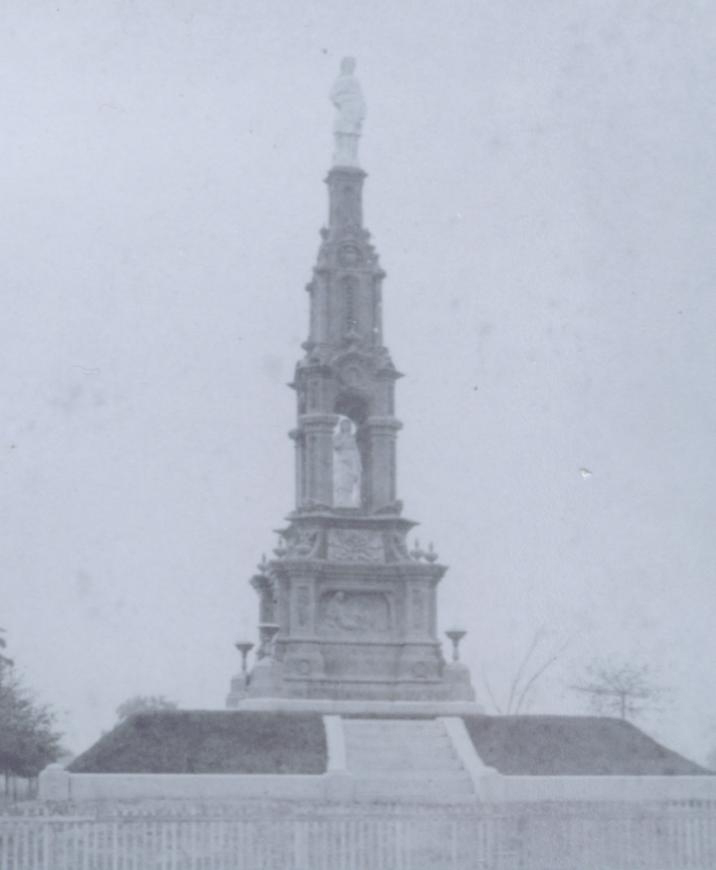
More than sixty monuments were built and dedicated during the first two decades of the twentieth century. These include many of the typical pedestal-shaft-soldier monuments found throughout Georgia. Examples exist in Brunswick, Cedartown (Polk County), Covington, Dublin, Eatonton, Gainesville, and Marietta. The first Confederate monument to women of the Confederacy was dedicated in Rome in 1910. The construction of new monuments waned in the first half of the twentieth century due to the hardships brought by World War I (1917-18), the Great Depression, and World War II (1941-45). From 1920 until 1980 approximately twenty-five monuments were dedicated in Georgia, including those in Canton, Commerce (Jackson County), Fairburn (Fulton County), and Toccoa (Stephens County), as well as the Confederate totem pole, which no longer exists, in Hall County at Blackshear Place.
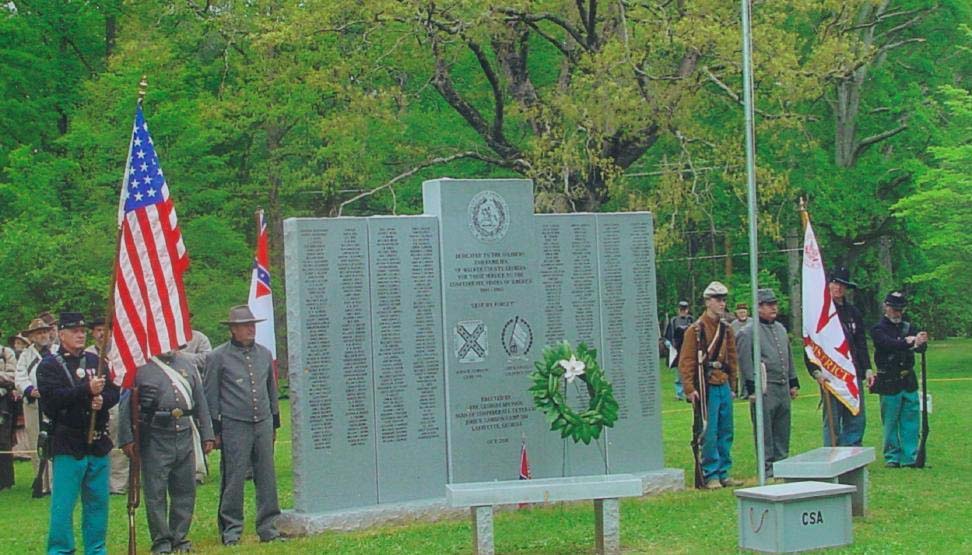
Between 1980 and 2005 dozens of Confederate monuments were dedicated at sites statewide. However, because of their association with slavery and white supremacy, new dedications are increasingly rare, and a wide variety of critics, including the Georgia NAACP, have called for their removal.





